Using FPGAs to
Design Gigabit
Serial Backplanes
April 17, 2002
�
Outline
•System Design Trends
•Serial Backplanes Architectures
•Building Serial Backplanes with FPGAs
A1 - 2
�
Key System Design Trends
•Need for ….
–Easy Scalability of Performance
–Extremely High Availability
–Flexible Architecture
–Use of Standards
• Rapid Time to Market
• Reduces Costs
A1 - 3
�
Merging Communications & Computers
• Communications Systems have serial backplanes
• Computers moving to serial backplanes
Database servers
Application servers
1U Web servers
Ethernet Switches
“Bladed Server”, PICMG 2.16
Internet
A1 - 4
�
Serial Standards
• Serial Standards
– Fiber Channel 1 Gbps
– Ethernet 1 Gbps
– InfiniBand 2.5 Gbps
• Parallel Standards Going Serial
– PCI => 3GIO
– RapidIO => Serial RapidIO
– ATA => Serial ATA
• Channel Bonded Serial Standards
– XAUI 10 Gigabit Ethernet (4 x 3.125 Gbps)
3GIO
3GIO
A1 - 5
�
Serial Connectivity = Higher
Bandwidth & Fewer Pins
2
3
4
5
1
50
Example - PCI: 32-bit x 33MHz = 1 Gbps, Shared among 5 clients 250 total pins
1
2
3
4
5
4
Virtex-II Pro System: 2.5 Gbps x 4 x 5 = 50 Gbps 80 total pins
Each Client has 2.5 Gbps guaranteed to every other Client
50x higher bandwidth with less than 1/3 of the pins
RJG
A1 - 6
�
Serial Link Rates
•OC-768
•OC-192
•10GE
•FC-10x
•SxI-5
•3GIO
•Infiniband
•Rapid IO
•OC-48
•GigE
•FC-2x
•FC
•OC-12
2000
2002
2004
Mainstream Deployment
2006
A1 - 7
40G
10G
3.125G
1.25G
622M
)
.
c
e
s
r
e
p
s
t
i
b
(
s
e
t
a
R
k
n
L
i
155M
•OC-3
1998
�
Serial Topologies
Switched
Full Mesh
PICMG 2.16
PICMG 2.2
PICMG 3.x
A1 - 8
�
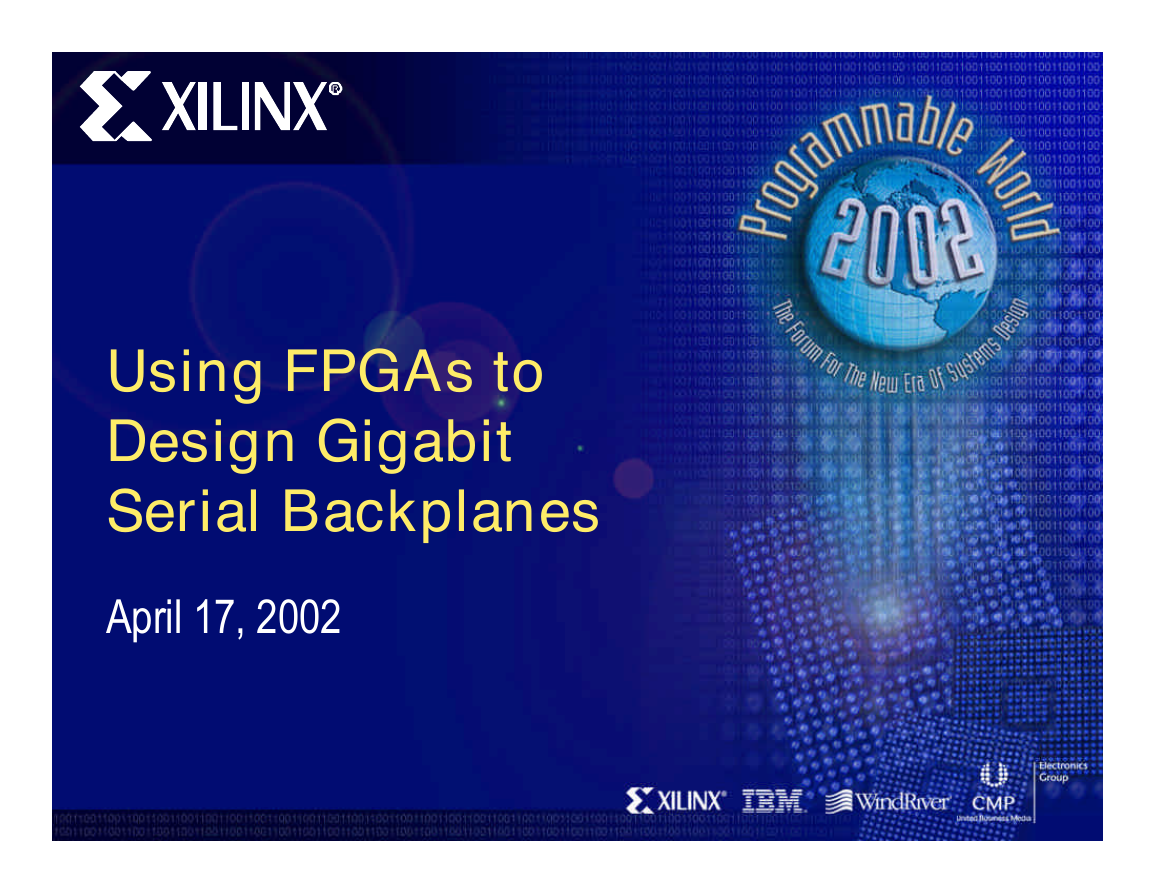
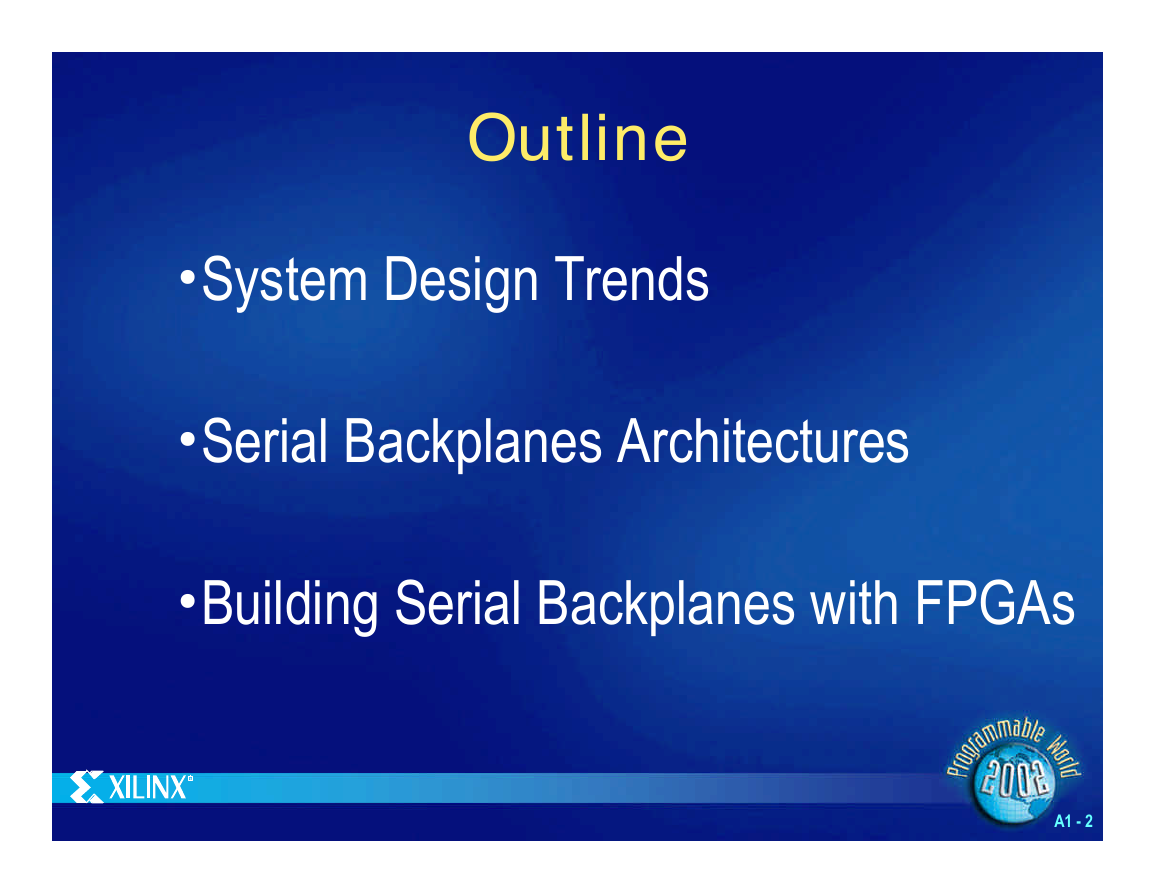
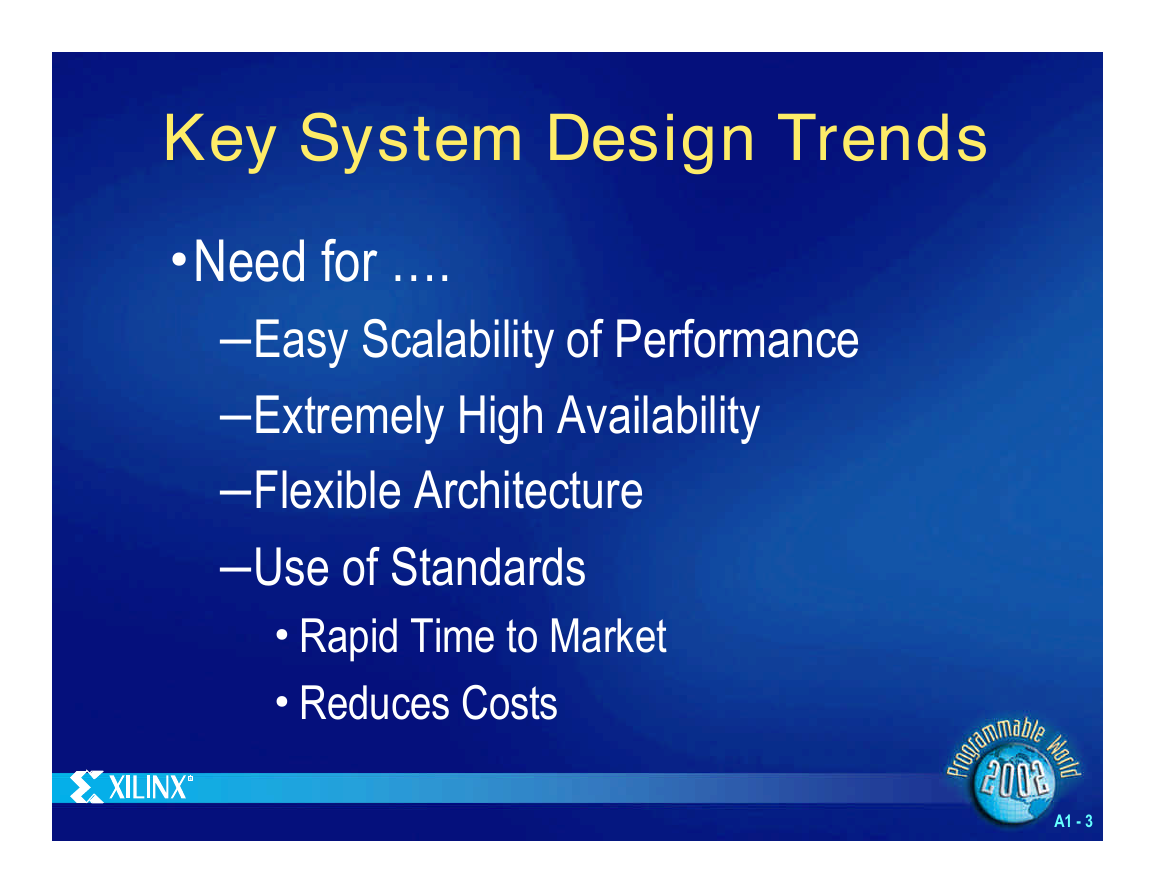
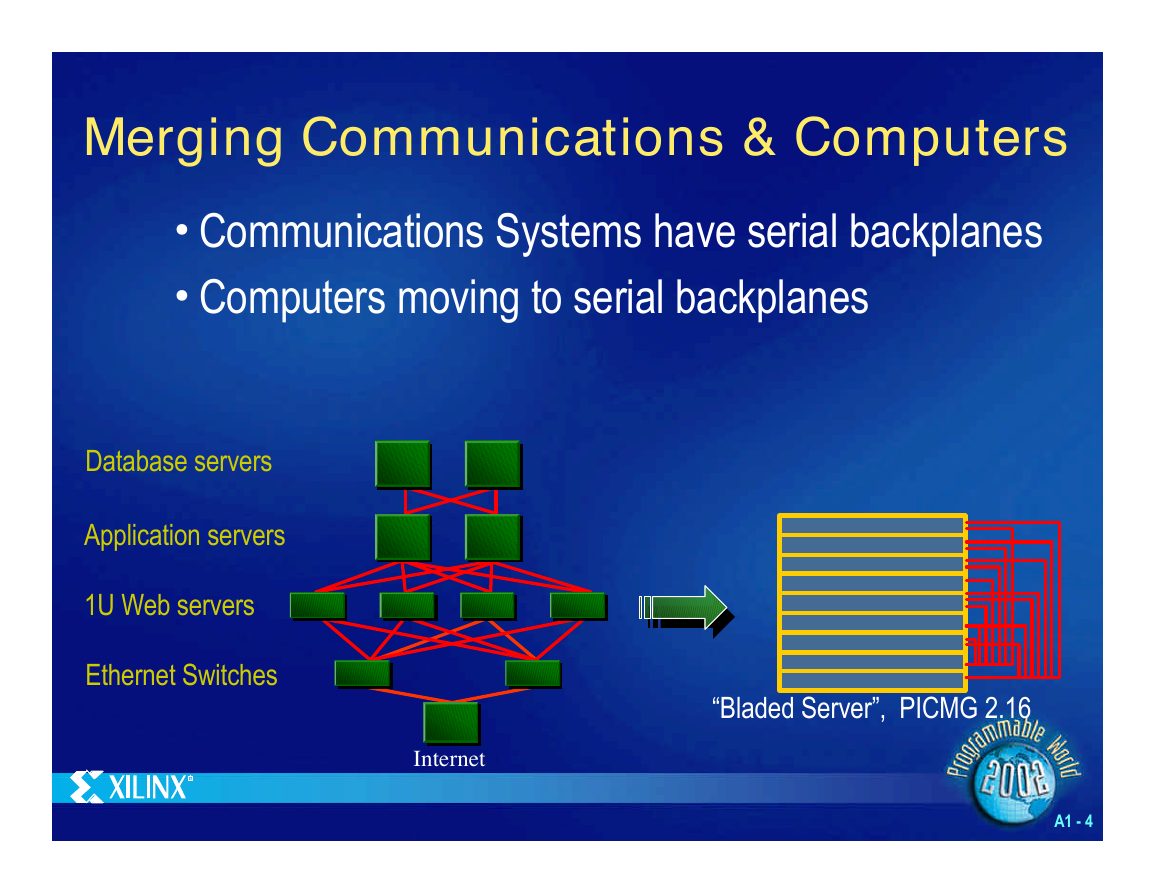
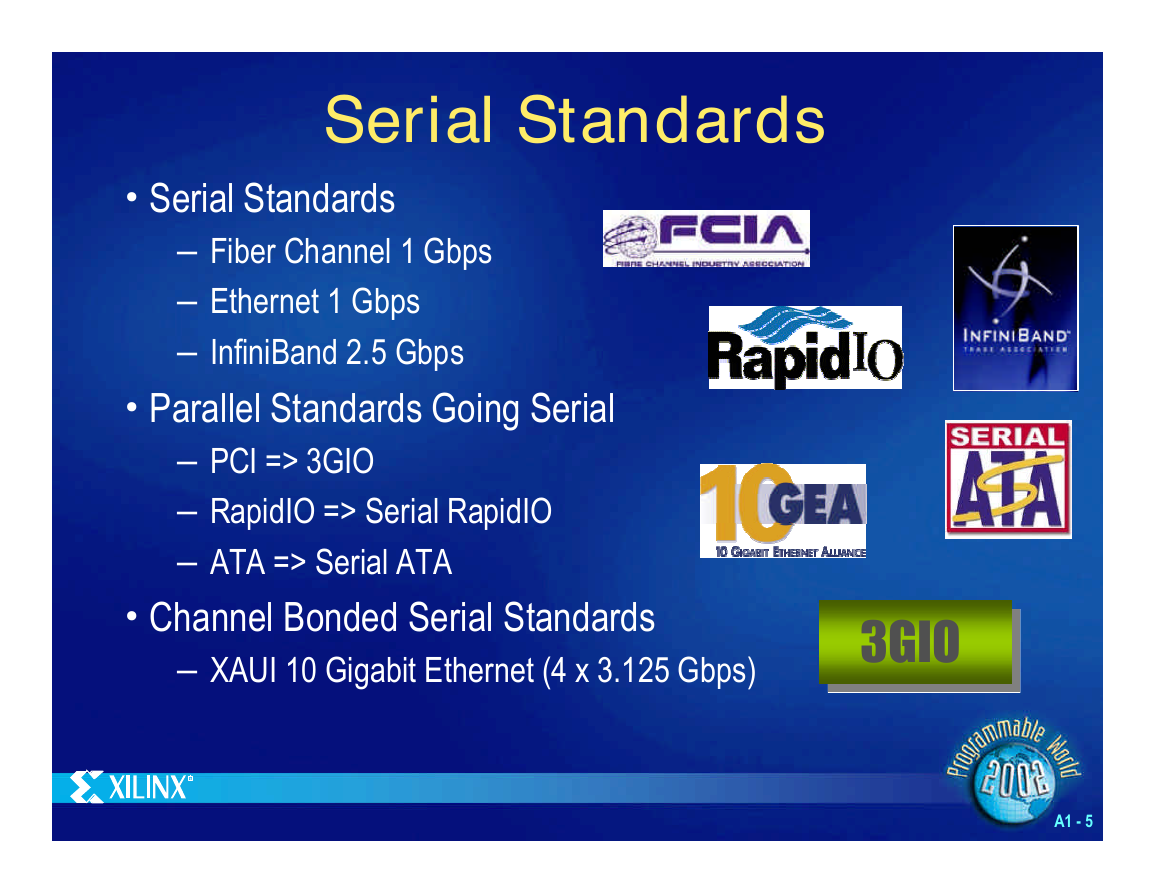
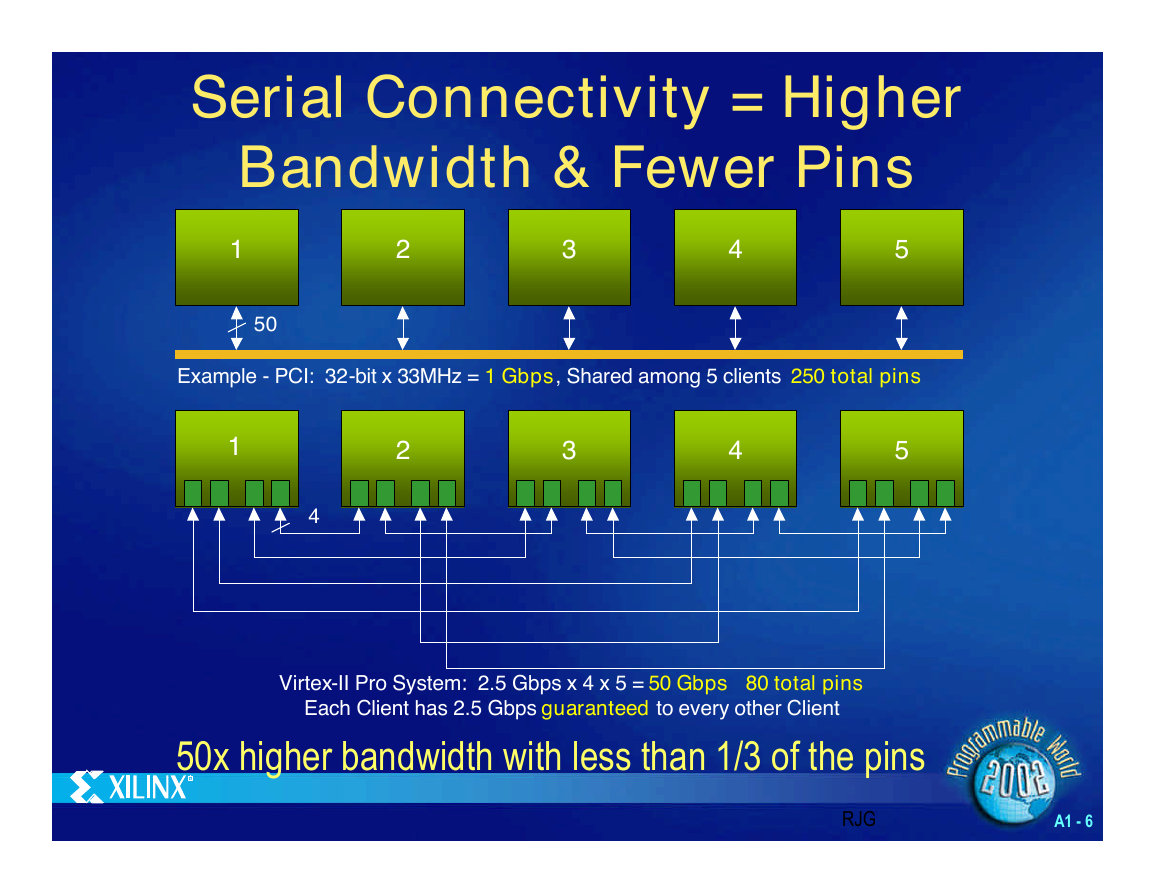

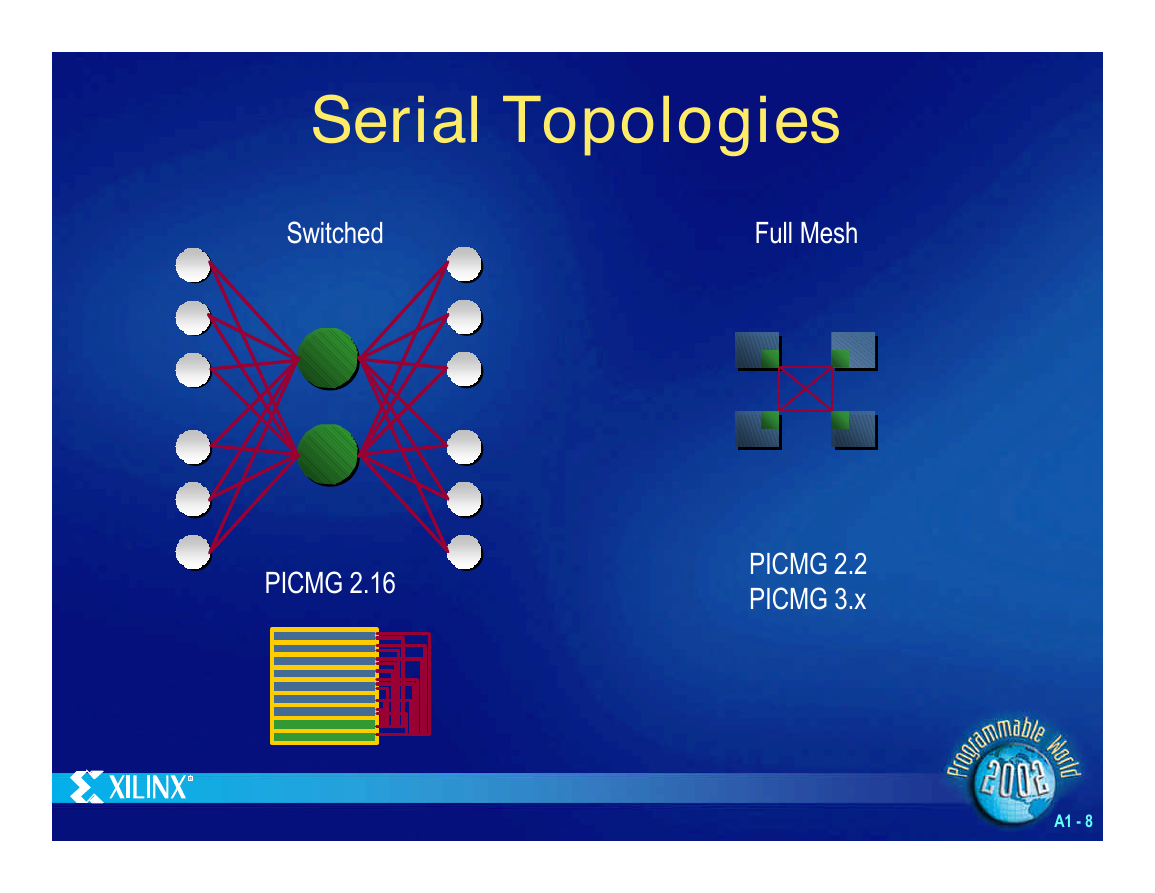








 2023年江西萍乡中考道德与法治真题及答案.doc
2023年江西萍乡中考道德与法治真题及答案.doc 2012年重庆南川中考生物真题及答案.doc
2012年重庆南川中考生物真题及答案.doc 2013年江西师范大学地理学综合及文艺理论基础考研真题.doc
2013年江西师范大学地理学综合及文艺理论基础考研真题.doc 2020年四川甘孜小升初语文真题及答案I卷.doc
2020年四川甘孜小升初语文真题及答案I卷.doc 2020年注册岩土工程师专业基础考试真题及答案.doc
2020年注册岩土工程师专业基础考试真题及答案.doc 2023-2024学年福建省厦门市九年级上学期数学月考试题及答案.doc
2023-2024学年福建省厦门市九年级上学期数学月考试题及答案.doc 2021-2022学年辽宁省沈阳市大东区九年级上学期语文期末试题及答案.doc
2021-2022学年辽宁省沈阳市大东区九年级上学期语文期末试题及答案.doc 2022-2023学年北京东城区初三第一学期物理期末试卷及答案.doc
2022-2023学年北京东城区初三第一学期物理期末试卷及答案.doc 2018上半年江西教师资格初中地理学科知识与教学能力真题及答案.doc
2018上半年江西教师资格初中地理学科知识与教学能力真题及答案.doc 2012年河北国家公务员申论考试真题及答案-省级.doc
2012年河北国家公务员申论考试真题及答案-省级.doc 2020-2021学年江苏省扬州市江都区邵樊片九年级上学期数学第一次质量检测试题及答案.doc
2020-2021学年江苏省扬州市江都区邵樊片九年级上学期数学第一次质量检测试题及答案.doc 2022下半年黑龙江教师资格证中学综合素质真题及答案.doc
2022下半年黑龙江教师资格证中学综合素质真题及答案.doc